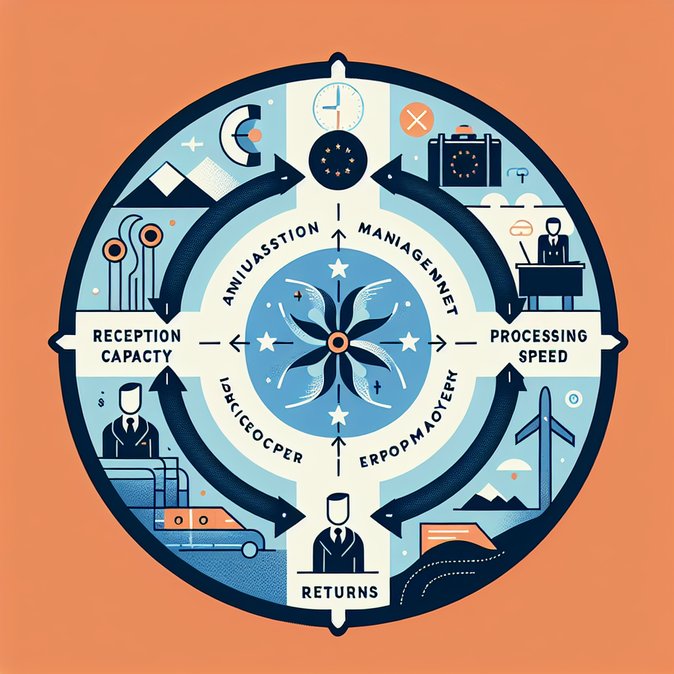
On 12 November 2025 the European Commission’s Directorate-General for Migration and Home Affairs kicked off the inaugural “Annual Migration Management Cycle”, a centre-piece monitoring tool of the Pact on Migration and Asylum adopted earlier this year. The Cycle combines a sweeping Asylum & Migration Report with a forward-looking “Solidarity Pool” proposal that allocates relocation places, financial contributions and capacity-building support among EU member states—including Austria—for the 12 months ahead.
For Vienna, the timing is crucial. Austria’s new three-party coalition has promised to cap asylum inflows while simultaneously expanding economic-migration quotas through the Red-White-Red card scheme. The Commission’s data-driven methodology will feed directly into Council negotiations in spring 2026, when binding figures for relocations and border-management aid are set. According to Commission officials, Austria is currently classified as under “moderate migratory pressure” thanks to a 37 percent drop in first-time asylum applications in H1 2025, but may still be asked to accept up to 820 relocated applicants from frontline states next year or pay an equivalent financial contribution of roughly €17 million.
![European Commission Starts First Annual Migration Management Cycle under the Pact, Setting Benchmarks that Will Shape Austria’s 2026 Quotas]()
The new Cycle also benchmarks reception-capacity standards, processing times and return-rates. Austria performs above the EU average in processing speed but lags in effective returns of rejected applicants—a metric Vienna’s Interior Ministry wants to improve via recent readmission talks with Iraq and Tunisia. Failure to meet targets could trigger “corrective measures”, such as compulsory staff secondments to EU agencies.
Corporate mobility managers should watch the solidarity discussions closely. The Commission stresses that labour-migration channels must be scaled in parallel with asylum solidarity to fill Europe’s talent gaps. Austria’s Wirtschaftskammer has already lobbied Brussels to exempt holders of national talent visas from solidarity-quota calculations, arguing that high-skilled migration should not be conflated with humanitarian relocation.
Next steps include a technical briefing for national coordinators on 20 November and Council deliberations in December. Stakeholders expect heated debate, but the structured calendar gives businesses, NGOs and regional authorities a clearer window for advocacy than under the ad-hoc crisis management of previous years.
For Vienna, the timing is crucial. Austria’s new three-party coalition has promised to cap asylum inflows while simultaneously expanding economic-migration quotas through the Red-White-Red card scheme. The Commission’s data-driven methodology will feed directly into Council negotiations in spring 2026, when binding figures for relocations and border-management aid are set. According to Commission officials, Austria is currently classified as under “moderate migratory pressure” thanks to a 37 percent drop in first-time asylum applications in H1 2025, but may still be asked to accept up to 820 relocated applicants from frontline states next year or pay an equivalent financial contribution of roughly €17 million.

The new Cycle also benchmarks reception-capacity standards, processing times and return-rates. Austria performs above the EU average in processing speed but lags in effective returns of rejected applicants—a metric Vienna’s Interior Ministry wants to improve via recent readmission talks with Iraq and Tunisia. Failure to meet targets could trigger “corrective measures”, such as compulsory staff secondments to EU agencies.
Corporate mobility managers should watch the solidarity discussions closely. The Commission stresses that labour-migration channels must be scaled in parallel with asylum solidarity to fill Europe’s talent gaps. Austria’s Wirtschaftskammer has already lobbied Brussels to exempt holders of national talent visas from solidarity-quota calculations, arguing that high-skilled migration should not be conflated with humanitarian relocation.
Next steps include a technical briefing for national coordinators on 20 November and Council deliberations in December. Stakeholders expect heated debate, but the structured calendar gives businesses, NGOs and regional authorities a clearer window for advocacy than under the ad-hoc crisis management of previous years.








